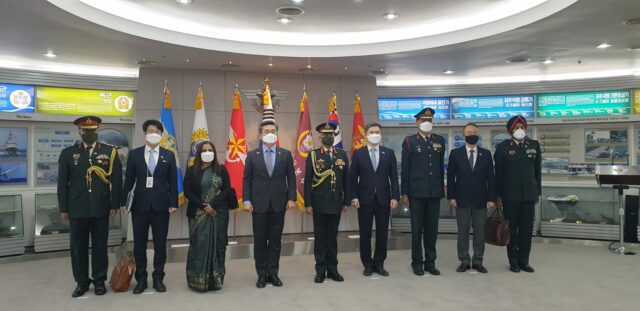NEW DELHI: “There are some golden rules of military diplomacy that a defence attache (DA) posted abroad must know,” says Lt. Gen. Shokin Chauhan (Retd), recalling his days as DA in Kathmandu (2004-07) when there was a nationwide movement against Nepal’s monarchy and a Maoist rebellion was ravaging the countryside. “Know your nation’s interests and aggressively pursue them; understand the host nation’s interests and how best you can meet their needs; get to know the other DAs so they understand what your nation’s stakes in Nepal are.”
At that time (and even today), the goal was to ensure the Royal Nepal Army (as it was then) “remained united, intact and with us (India)”, given that every foreign power was active in Kathmandu, seeking to influence institutions and the course of events.
Gen. Chauhan said China was as active then as it is now, also Pakistan, both working through their respective DAs in Kathmandu. Add to that the Americans. “But the Americans came round to our point of view because of the 1,28,000 Indian Army pensioners in the countryside who we were in touch with,” he pointed out, adding: “We were also able to convey information to the Nepal government.”
This represents the less spoken and therefore less well known aspect of India’s military diplomacy, compared to say the high profile: India’s transfer of a Kilo-class submarine to Myanmar or plans to export the Brahmos cruise missile to the Philippines or the sale/gift of naval patrol vessels to countries in the littoral. Add to that joint exercises, training courses, visits by the military brass (Army Chief Gen. MM Naravane was recently in the UAE and Saudi Arabia), humanitarian and disaster relief and so on.
So military or defence diplomacy is another crucial element in the exercise of state power. One presumes that diplomacy of this kind is aligned with traditional foreign policy and both are working towards realising a set of political objectives laid down by the civilian executive. The presumption may not be accurate. Former Northern Army Commander Lt. Gen. DS Hooda (Retd) says “there is no platform where the political establishment, diplomats and the military can meet, understand where each is coming from, that will underpin the international and regional strategy of the foreign office and the Ministry of Defence.”
The Cabinet Committee on Security meets only when required and the National Security Council Secretariat is seen as a highly bureaucratized body having little interface with the military (even though there are senior retired military officers in it).
He recalled the debate many years ago about supplying arms to Myanmar. The diplomats were against it, the army pushed hard for it. Clearly, both arms of the political executive had different ideas as to where India’s national interests lay. Even when it came to supplying equipment and materials for a hospital for the Nepal Army, decisions took an inordinately long time. The implication: the lack of understanding within the Indian establishment leaves the door open for others to step in.
Another former DA said he used to “skate on thin ice” when dealing with the diplomats in the embassy where he was posted. “They seemed to have no clear view of where India’s interests lay and viewed with suspicion any outreach by the DA to the military of the host country,” he said.
The sense is the Ministry of External Affairs (MEA) tends to guard its turf rather zealously. This is self-defeating at a time when military diplomacy is getting increasingly complex. “For the first time in our history we have a superpower on our doorstep and that doesn’t bode well,” says a senior military officer who has served in China. In his view, it underscores the need to build intellectual capacity within the military and in the MEA, on China, so the country knows what it is dealing with. The current standoff with China in eastern Ladakh is a case in point. It could be about India not reading correctly the signals sent by the Chinese. “The Chinese language is very symbolic, most of us don’t catch what they are saying, nuances in tone and communication are missed,” he says.
He says the Indian military needs to engage with the PLA’s Academy of Military Science, an in-house think tank which provides policy inputs to the high command. It is staffed by officers who have spent many years there pursuing various specializations including in India. Is there a comparable platform in the Indian military which can engage with the PLA academy, he asks. It appears there is none.
The Centre for Contemporary China Studies (CCCS) in the MEA, headed by a retired army officer, is seen as a welcome effort by the current foreign policy establishment to bring some synergy in thinking on China. Its scholars are drawn from various branches of the armed forces and their research provides valuable inputs for policy makers. But then it is the only one of its kind.
Likewise, there is a need to explore how military diplomacy can work with the MEA when it comes to Pakistan or Bangladesh. Or for that matter with Southeast Asian countries ranging from Indonesia to Thailand, Vietnam, Laos and Cambodia. All these countries have a long military tradition and it may be a good idea to send senior officers from the armed forces as ambassadors.
The sense is the current Indian foreign policy leadership understands that gaps exist and need to be bridged. Likewise, recent reforms in the higher defence establishment are welcome. But these arms of government need to work with greater synergy and to a common purpose.
















